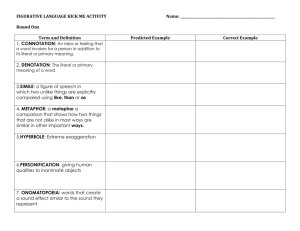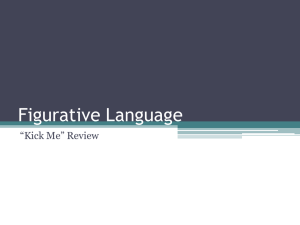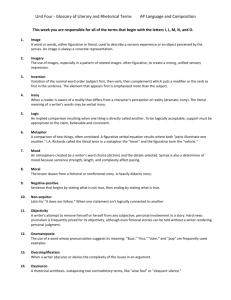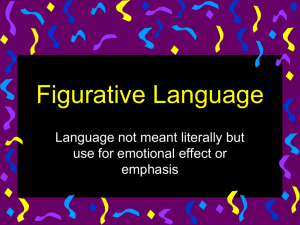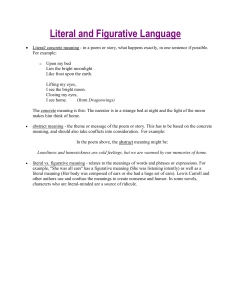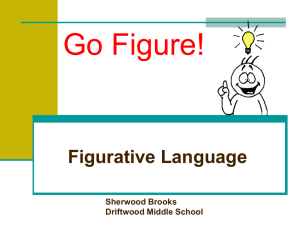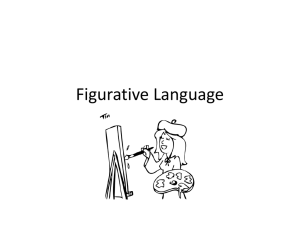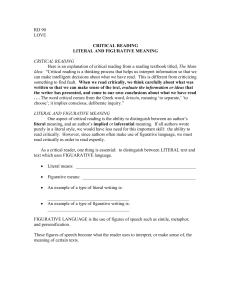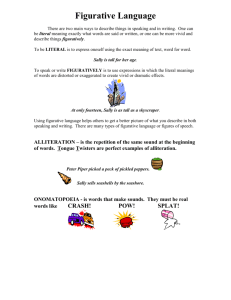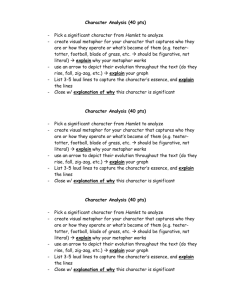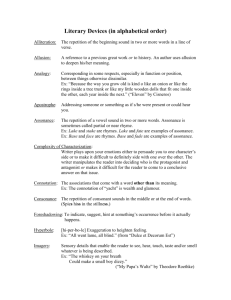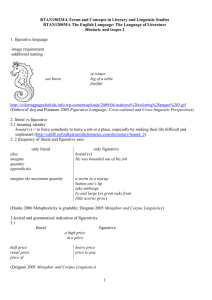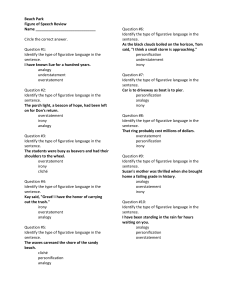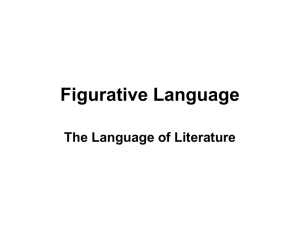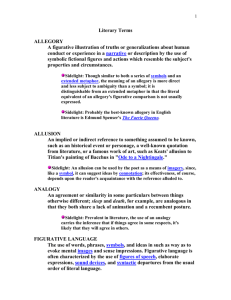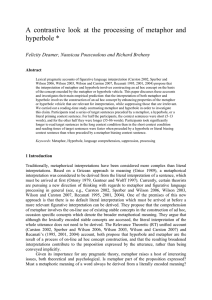Figurative Language Practice Simile – A comparison using either
advertisement
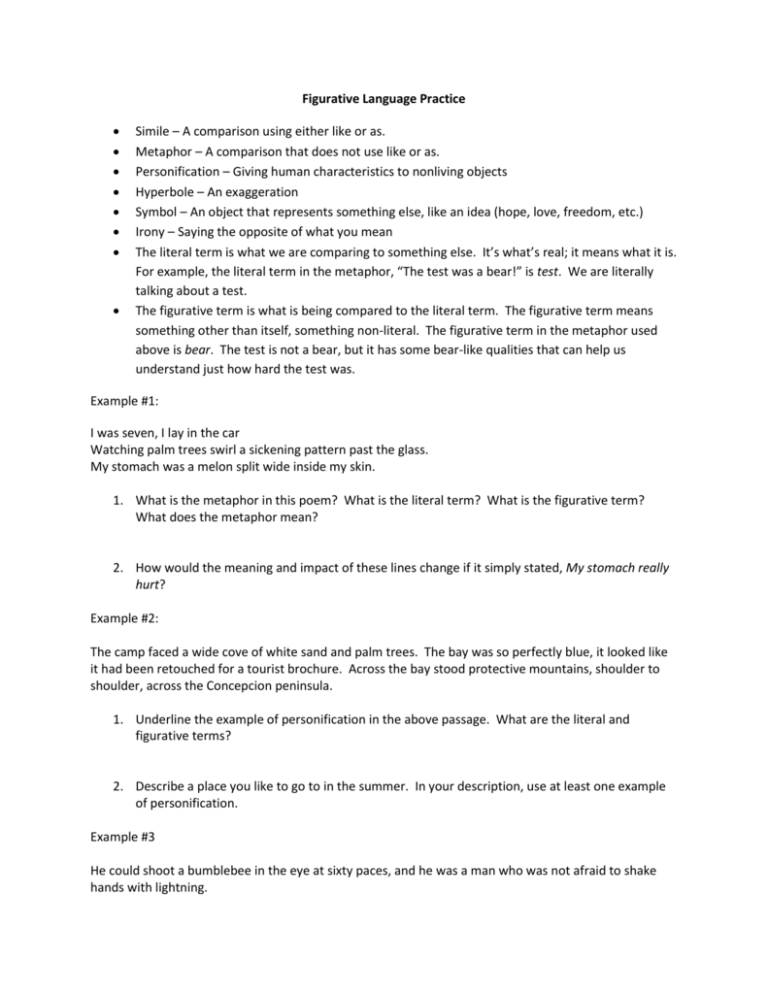
Figurative Language Practice Simile – A comparison using either like or as. Metaphor – A comparison that does not use like or as. Personification – Giving human characteristics to nonliving objects Hyperbole – An exaggeration Symbol – An object that represents something else, like an idea (hope, love, freedom, etc.) Irony – Saying the opposite of what you mean The literal term is what we are comparing to something else. It’s what’s real; it means what it is. For example, the literal term in the metaphor, “The test was a bear!” is test. We are literally talking about a test. The figurative term is what is being compared to the literal term. The figurative term means something other than itself, something non-literal. The figurative term in the metaphor used above is bear. The test is not a bear, but it has some bear-like qualities that can help us understand just how hard the test was. Example #1: I was seven, I lay in the car Watching palm trees swirl a sickening pattern past the glass. My stomach was a melon split wide inside my skin. 1. What is the metaphor in this poem? What is the literal term? What is the figurative term? What does the metaphor mean? 2. How would the meaning and impact of these lines change if it simply stated, My stomach really hurt? Example #2: The camp faced a wide cove of white sand and palm trees. The bay was so perfectly blue, it looked like it had been retouched for a tourist brochure. Across the bay stood protective mountains, shoulder to shoulder, across the Concepcion peninsula. 1. Underline the example of personification in the above passage. What are the literal and figurative terms? 2. Describe a place you like to go to in the summer. In your description, use at least one example of personification. Example #3 He could shoot a bumblebee in the eye at sixty paces, and he was a man who was not afraid to shake hands with lightning. 1. This is an example of hyperbole, an exaggeration that is based on truth but carries the truth to such an extreme that it is no longer literally true. Of course, this man could not literally do these things. What, then, is the purpose of saying he could? 2. What if we changed the sentence to something like this: He could shoot very well, and he was not afraid of anything. Which sentence helps the reader more? Why? 3. Exaggerate in a sentence. Example #4: Flowers and other things have been laid against the wall. There are little flags, an old teddy bear, and letters, weighted with stones so they won’t blow away. Someone has left a rose with a droopy head. ***This passage is from a book about the Vietnam War Memorial in D.C. There are several symbols in this passage. Identify the symbol and explain what they mean. Symbol What the symbol means 1. What other traditional symbols do you know? Make a list here. Example #5: Mrs. Silverman handed the class a huge packet for homework. My jaw dropped. I couldn’t help myself and screamed, “I love when you give us four hours of homework!” She just smiled and continued on with the day’s lesson. 1. Remember that verbal irony implies the opposite of what is said. Which sentence has verbal irony in this passage? 2. How do you know that sentence contains verbal irony? 3. Write a few sentences describing a family outing you didn’t enjoy. Include at least one example of irony.
